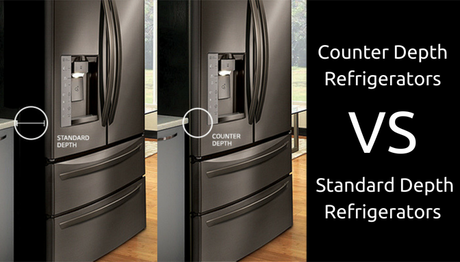
20th Century Refrigerators
Refrigerators sure have come a long way since the beginning of the twentieth century.
If you didn't have the "ice man" delivering those blocks of ice for your ole' ice-box, then surely you had a self-contained refrigerator, with a compressor on the bottom of the cabinet which was invented by Alfred Mellowes in 1916!
Or maybe you held out until 1918 when William C. Durant started the Frigidaire company to mass produce refrigerators.
But the first refrigerator to see widespread use was the General Electric "Monitor-Top" refrigerator introduced in 1927, so-called because of its resemblance to the gun turret on the ironclad warship USS Monitor of the 1860s.
And moving forward to the 1950s and 1960s, you saw technical advances like automatic defrosting and automatic ice makers. More efficient refrigerators were developed in the 1970s and 1980s, even though environmental issues led to the banning of very effective refrigerants like Freon.
21st Century Refrigerators
Now, let's take a look at where we're at today in the twenty-first century.
We have refrigerators that are top-freezer, bottom freezer, side-by-side and French door styles. They come with all sorts of advanced features, colors, and gimmicks.
You can get them with or without water/ice dispensers, with or without ice-makers. With or without computer tablets that permits you to look inside to see what's going on. Even log into your computer wi-fi and watch your favorite television program or listen to your favorite music!
Counter Depth Refrigerators VS Standard Depth Refrigerators
All that aside, the first and one of the most important concerns is how far the refrigerator sticks out into the kitchen space. Le'ts take a look at counter depth refrigerators vs standard depth refrigerators.
Counter-Depth Refrigerators
A counter depth refrigerator always measures 24 inches in depth from the back of the refrigerator door to the back of the unit casing and approximately 27 inches to the outer door.
For the customer where capacity isn't a great importance or they want a clean look in the kitchen or they have a secondary freezer or refrigerator in the home to handle overflow, a counter depth fridge is the choice.
Counter depth refrigerators do not stick out into the kitchen except for the thickness of the refrigerator doors, that has to stick out so they can open and close. Typical capacity of any given 36 inches wide counter depth refrigerator ranges from 20 to 24 cubic feet depending on the brand.
Standard Depth Refrigerators
A standard depth refrigerator measures, depending on the brand, approximately 29 inches from the back of the refrigerator door to the back of the unit casing and approximately 34.5 inches to the outer door.
For the customer where capacity is of great importance or where there may be many people in the home, a standard depth refrigerator is the choice.
The standard depth usually costs less and provides more usable space without having to worry about getting a secondary refrigerator in the home, etc. Typical capacity of any given 36 inches wide standard depth refrigerator can range from 25 to 31 cubic feet depending on the brand.
Buying the Best Refrigerator
There certainly are quite a few choices out there. The good news is you'll never have to worry about not having the correct space for a refrigerator to fit properly in your kitchen!

